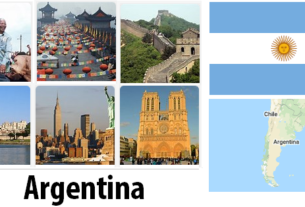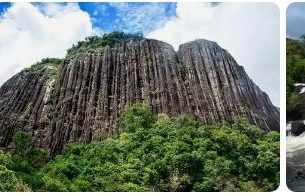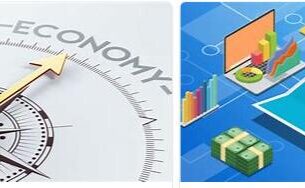GENERAL
Official name of the state
Republic of Colombia.
Capital
Santafé de Bogotá.
Geography
According to estatelearning, Colombia is located on the northern tip of South America. It is bordered to the north by the Caribbean Sea, to the northwest by Panama, to the west by the Pacific Ocean, to the southwest by Ecuador and Peru, to the northeast by Venezuela and to the southeast by Brazil. The Andes cross the country in three mountain ranges from south to north and finally drop to the plains on the Caribbean coast. On the southern Pacific coast are extensive swampy plains that rise to a relatively low, rugged mountain range. To the east of this mountain range, coastal plains extend in the southwest from the port city of Buenaventura on the Pacific coast to the Caribbean Sea. In the east these plains are bounded by the slopes of the Western Cordillera, which run together with the Central Cordillera from the Caribbean Plain in the north to Ecuador. The two mountain ranges are separated by a valley that is filled with volcanic ash in the south up to a height of 2500 m. Further north is the fertile Cauca Valley, which stretches as far as Cartago, where it narrows to a gorge that stretches between the Cordilleras to the Caribbean plain. The Eastern Cordilleras, the longest mountain range, rise north of the border with Ecuador and run first north and then northeast to the Venezuelan border. The flat grass steppes in the east as well as the jungle and the huge rainforests of the Amazon cover over half of the country. 480 km northwest of the Colombian coast lie two small islands, San Andrés and Providencia, which have belonged to Colombia since 1822. Colombia has five biosphere reserves.
Government
Presidential republic since 1886. Constitution of 1991. Bicameral parliament (Congreso): House of Representatives with 166 members and Senate with 102 members. Two seats each for the indigenous people. Independent since 1810 (former Spanish colony).
Head of state
Juan Manuel Santos Calderón, since 2010, (re-elected in June 2014).
Head of government
Juan Manuel Santos Calderón, since August 2010.
Electricity
110 V, 60 Hz. Two-pole and partly three-pole flat plugs. Adapter necessary.
Time zone
Colombia Time: CET -6
LANGUAGE
Overview
The official language is Spanish. In addition, Chibcha, Quechua and other Indian languages and, in some cases, business people also speak English.
Idioms
- Eight = Ocho
- Eighty = ochenta
- Goodbye = Chau
- Exit = Salida
- Beer = Cerveza
- Please = Por favor
- Thank you very much = Gracias
- Tuesday = Martes
- Thursday = Jueves
- Doctor = Médico
- Thirty = Treinta
- Three = Tres
- One = Un / uno / una
- Entrance = Entrada
- One hundred = cien
- One thousand = mil
- Friday = Viernes
- Five = Cinco
- Fifty = cincuenta
- Danger = Peligro
- Open = Abierto
- Closed = Cerrado
- Good morning = Buenos Dias
- Hello = Buenas Tardes’
- Good evening = Buenas Noches
- Hello = hola
- Today = Hoy
- Hotel = hotel
- I do not understand that. = No entiendo
- I feel sick = Me encuentro times
- Yes = Sí
- My name is…?? = Me llamo…
- I’m fine. = Estoy muy bien
- Wednesday = Miércoles
- Monday = Lunes
- Tomorrow = Mañana
- Nine = Nueve
- Ninety = noventa
- No = no
- Restaurant = restaurants
- Saturday = Sábado
- Six = Seis
- Sixty = Sesenta
- Seven = pages
- Seventy = setenta
- Sunday = Domingo
- Menu = Carta
- Do you speak German / English? = ¿Habla alemán / inglés?
- Excellent! = Chevere!
- Toilets = servicios
- Forty = Cuarenta
- Four = Cuatro
- Wine = vino
- How are you? = ¿Qué tal estás?
- How much is it? = ¿Cuánto it?
- Where is …? = ¿Dónde está?
- Ten = Diez
- Twenty = United
- Two = Dos
CULTURE
Religion
Catholics (95%); Protestant and Jewish minorities.
Social rules of conduct
General: Colombians are very sociable, helpful and hospitable. But she doesn’t like to hear jokes and comments about drugs, guerrillas and the mafia. Colombians love to hear stories from the visitor’s home country.
Manners: The usual rules of courtesy should be observed. For invitations to private houses, a small gift is appropriate, but excessive gifts or even monetary donations should be avoided. It is common to offer guests a black, heavily sweetened tinto (coffee). Criticism and negative remarks should be reserved; in case of doubt, a more reserved appearance is appropriate. Patience and composure help in most cases.
Clothing: Well-groomed everyday clothing is appropriate in most cases, but you should dress appropriately for special social occasions and in exclusive restaurants. Camouflage clothing should be avoided so as not to be confused with guerrillas or soldiers. Swimwear belongs on the beach.
Photography: Military installations and airports are not allowed to be photographed, the same applies to the police. People should be asked before they are photographed. Some indigenous peoples cannot be photographed for religious reasons. For your own safety, you should be careful not to present an expensive camera to everyone.
Smoking: Smoking is allowed almost everywhere. Designated non-smoking areas should be observed. Many hotels offer smoking and non-smoking rooms.
Security: Although the security situation in Colombia has continuously improved, visitors should nevertheless note that street crime is very high in many larger Colombian cities, especially at night.
CLIMATE
Best travel time
The climate depends on the altitude: tropical below 1000 m, moderate climate between 1000 and 2000 m and cool climate above 2000 m.
Very warm, tropical climate on the coast and in the north (average temperature 22 ° -30 ° C). Rainy season from May to November. It is cooler in the highlands and cold in the mountains at 2400-3200 m altitude.
Bogotá has a temperate climate and therefore spring-like weather all year round, and it can get cold at night.
COUNTRY DATA
Area code +57 Area (square km) 1141748 Population 48829 027 Population density (per square km) 41 Population in 2016 Member of the EU No main emergency number 123




